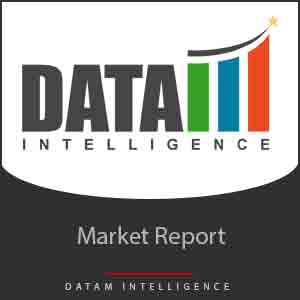
COVID-19 Analysis Pet Probiotics Market
During the pandemic, as a result of the lockdown in several nations, the market for pet probiotics has faced few hurdles during transportation.
2021-10-18
Covid-19 Impacts on Pet Probiotics Market
Before the outbreak of the coronavirus, the demand for pet probiotics was increasing at a significant rate, and various key players were investing in the R&D sector of the product due to increased awareness among the consumer
During the pandemic, as a result of the lockdown in several nations, the market for pet probiotics has faced a few hurdles during transportation and distribution. In addition, various ongoing projects on pet probiotics were kept on hold to restrict the gathering of people and order further virus transmission
However, in response to increased farmer demand, government rules about the industry were adopted in most countries, resulting in a boost in growth opportunities in the dry form of probiotics in the animal feed segment. In addition, the pet-care sector has rarely experienced such rapid change as it did in 2020. The COVID-19 pandemic changed purchasing habits and resulted in a record number of first-time pet owners adopting animals during the lockdown
For instance, a pet is owned by more than one-third of families in developed countries. According to the National Pet Owners Survey (2019-20) performed by the American Pet Products Association (APPA), more than 85 million households in the United States had one or more pets, the majority of which were dogs. As a result, the pet food market showed increment coupled with creating opportunities for the pet probiotics to grow in the forecast period as pets become more humanized.
Thus growing adoption of pets during the pandemic has also improved the feeding pattern by the consumer as the threat of animals getting caught by covid-19 was increasing the awareness among the consumer to adopt an energy-rich diet and hence increased the demand for probiotics in animal feed. To address the growing demand, the players in the market have shifted their focus from retail stores to e-commerce platforms by increasing their investments in developing their websites
There have been fluctuations in the pricing has been seen by the customers in the pet probiotics products due to supply chain disruption and the availability of fewer delivery agents in the severely affected areas of the globe due to covid-19
Furthermore, According to data from the United States Bureau of Labor Statistics (BLS) reported and evaluated by John Gibbons, aka the Pet Business Professor, pet food consumption in the United States climbed by more than 31% year over year (YOY) by mid-2020. In addition, According to BLS data, pet food spending in the United States hit about US$40 billion by mid-2020—US$37.96 billion to be precise. According to Gibbons, this was a $9.06 billion increase from mid-year 2019
Thus the growing spending on pet food is more likely to increase awareness among the consumer towards adopting a healthy lifestyle for pets and educate the consumer regarding the associated benefits of probiotics in pets' daily eating habits leading to market opportunities for the product in the forecast period
On the other hand, the poultry industry is battling rumors of coronavirus spreading through the consumption of meat and meat products. After years of growth, the Europe poultry sector is expected to contract moderately in 2020 before rebounding in 2021, although at a slower growth rate than pre-Covid
EU-27 chicken meat production is envisaged to decline by 1.6% in 2020 due to the impact of the Covid-19 pandemic that led to a lockdown in most EU-27 countries and the temporary closure of hotels, restaurants, and institutional cafeterias (HRI)
Poland is the largest EU-27 chicken producer with close to 20% of all EU-27 chicken production. However, several cases of HPAI were reported in 2019 and 2020 in Bulgaria and Poland, leading several countries – South Africa, China, South Korea, Singapore, Japan, Taiwan, the UAE, and the Philippines – to ban Polish poultry and egg products. Due to the decline in poultry production, feed consumption has decreased which further led to a decrease in the consumption of the probiotic
Furthermore, the three major pandemics of avian influenza, African swine fever, and coronavirus all affected the global poultry industry in 2020, especially in terms of imports and exports. Feed prices have also affected the poultry industry, and these have risen by 50 to 60% higher than before
Not only the poultry industry, but the swine industry was also significantly impacted due to covid-19. In 2020, the COVID-19 pandemic virus had a direct impact on the pork industry when, in March 2020, packing plants started closing due to employee health concerns. As pig growth was slowed, the performance was felt in almost every metric. When comparing 2020 to 2019, pigs were on feed for 3.2 days longer which led to a heavier average out the weight of nearly 1.5 pounds (1.38). A slower growth rate (ADG) of 0.4 and a worsening feed efficiency (FCR) from 2.82 to 2.88 were also analyzed amongst the closeout data
However, after the lockdowns are removed in various countries and the pandemic situation has eased a bit, distribution facilities of advanced probiotics in animal feeds are likely to witness an increase in use in various livestock species such as poultry, swine, aquaculture, pets, and other livestock species.
About Us:
DataM Intelligence was incorporated in the early weeks of 2017 as a Market Research and Consulting firm with just two people on board. Within less than a year, we have secured more than 100 unique customers from established organizations all over the world.
For more information:
Sai Kiran
Sales Manager at DataM Intelligence
Email: [email protected]
Tel: +1 877 441 4866
Website: www.datamintelligence.com
Found it interesting?
Sai Kiran
Sales Manager at DataM Intelligence
Email: [email protected]
Tel: +1 877 441 4866
We have 5000+ marketing reports and serve across 130+ countries
